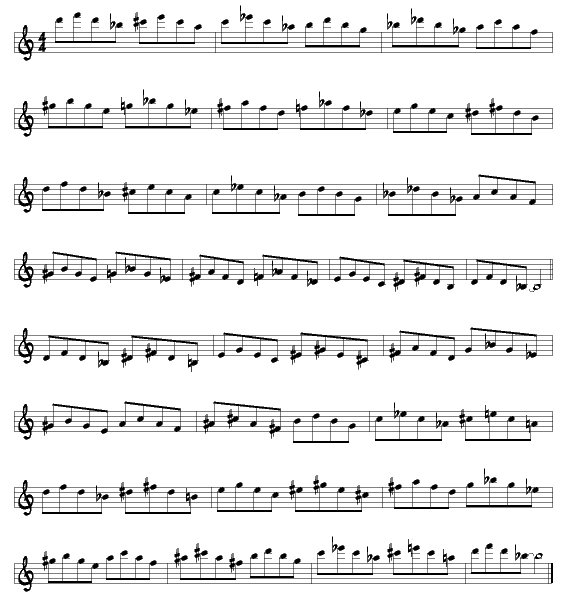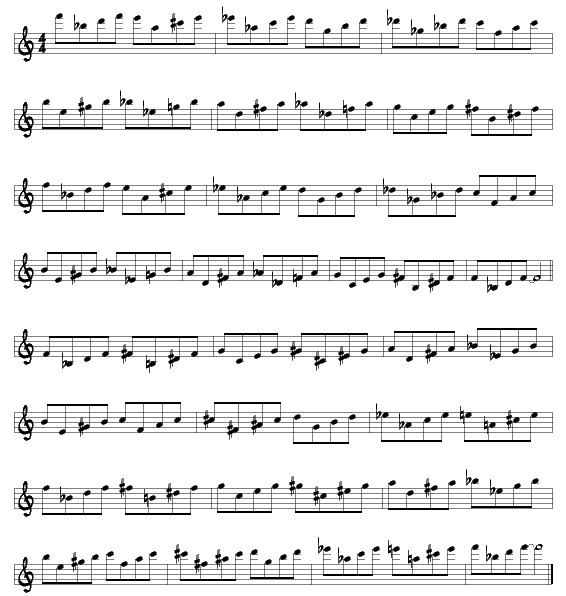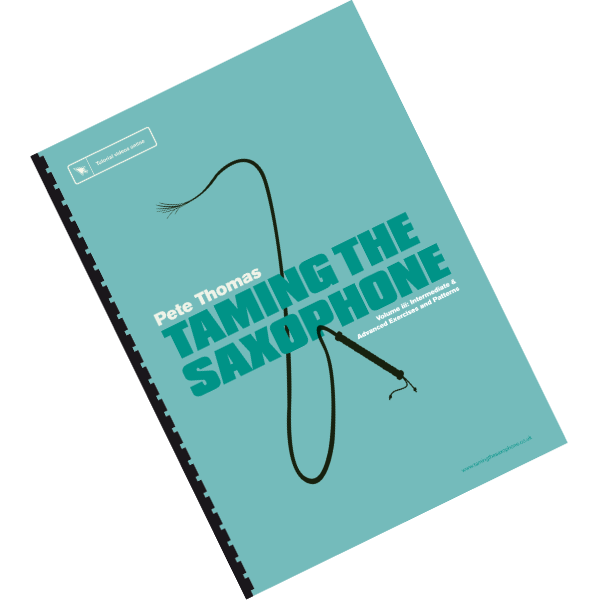Saxophone Fingering Exercises for a Fast Playing Technique
The next four fingering exercises of this section are based around simple four note triad patterns which take you chromatically through all the keys. These are very useful to gain a good fingering technique which is fast and even.
You can also do it with minor triads. Try to do this without the music as soon as possible to get your brain/finger coordination sharp. These exercises also work very well using intervals larger than a semitone between each four note pattern: minor thirds work very well.
The secret to playing faster
Even when you are not practicing the saxophone, you can train your fingers to be more dextrous, this is an exercise you can do almost anywhere:
With your hand palm down on a table:
- Raise and lower your fingers one by one.
- Raise and lower them in pairs: 1 & 3, 2 & 4, 1 & 2, 3 & 4, 2 & 3, 1 & 4
- Raise and lower them in threes: 123, 234, 134, 124 (really tricky)
These next saxophone exercises are aimed at helping you to move your fingers quickly, however it’s crucial to to this while keeping an even tempo. You should not speed up for the easy passages and slow down when they get tricky so set your metronome to a tempo at which you are comfortable, no matter how slow. Then speed it up very gradually once you feel you can play the patterns a bit faster without losing the steady beat.
I have followed the convention of using sharps when ascending chromatically and flats when descending. Enharmonic spellings are occasionally changed to avoid too many double sharps and flats
Ex 2.1
This pattern was used quite a lot by John Coltrane (listen to Giant Steps
)

Ex 2.2
A deceptively simple triad arpeggio. You’d think this would be easy – triads ascending and descending chromatically. However to master this you need to play it very evenly and fluidly so, again, start slow and very gradually work up to faster tempos.

Ex 2.3
Another triad arpeggio figure. If played fast enough, this type of pattern can be used whatever chord is being played, as long as you resolve or end up on a chord note, the dissonance of what would be wrong notes at a slower tempo can be used to create tension

Ex 2.4
Yet another triad exercise


Hi was wondering where I could download the sound files for volume 3
Thank you
Joe
The audio for example 1 (Warmup) is included with Taming The Saxophone Vol 3